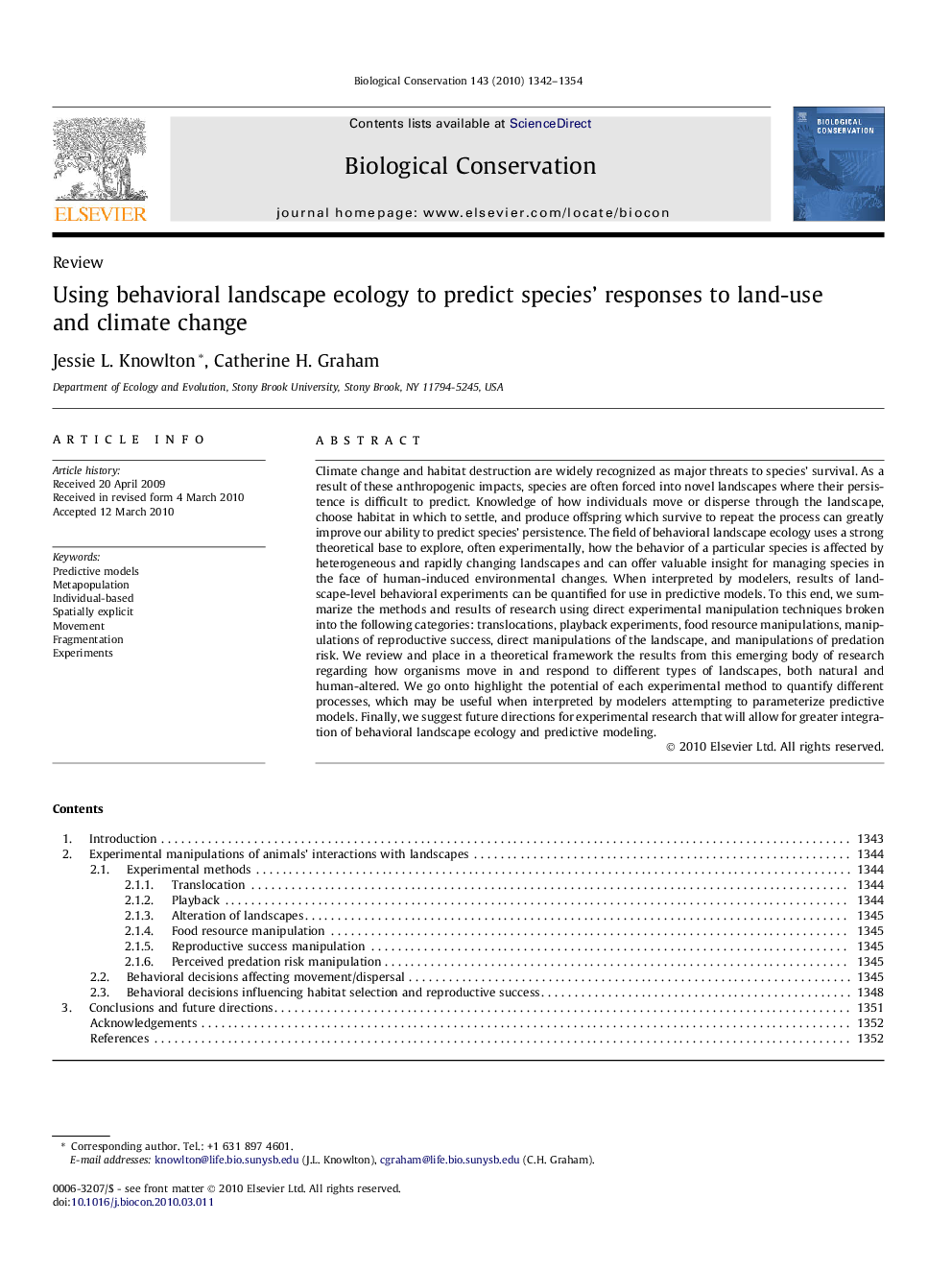| Article ID | Journal | Published Year | Pages | File Type |
|---|---|---|---|---|
| 4385569 | Biological Conservation | 2010 | 13 Pages |
Climate change and habitat destruction are widely recognized as major threats to species’ survival. As a result of these anthropogenic impacts, species are often forced into novel landscapes where their persistence is difficult to predict. Knowledge of how individuals move or disperse through the landscape, choose habitat in which to settle, and produce offspring which survive to repeat the process can greatly improve our ability to predict species’ persistence. The field of behavioral landscape ecology uses a strong theoretical base to explore, often experimentally, how the behavior of a particular species is affected by heterogeneous and rapidly changing landscapes and can offer valuable insight for managing species in the face of human-induced environmental changes. When interpreted by modelers, results of landscape-level behavioral experiments can be quantified for use in predictive models. To this end, we summarize the methods and results of research using direct experimental manipulation techniques broken into the following categories: translocations, playback experiments, food resource manipulations, manipulations of reproductive success, direct manipulations of the landscape, and manipulations of predation risk. We review and place in a theoretical framework the results from this emerging body of research regarding how organisms move in and respond to different types of landscapes, both natural and human-altered. We go onto highlight the potential of each experimental method to quantify different processes, which may be useful when interpreted by modelers attempting to parameterize predictive models. Finally, we suggest future directions for experimental research that will allow for greater integration of behavioral landscape ecology and predictive modeling.
